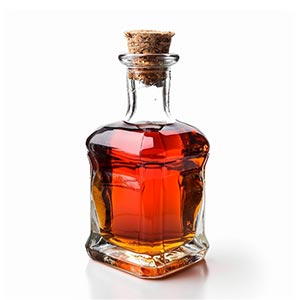Rum in fragrances is celebrated for its warm, sweet, and slightly spicy aroma. This ingredient brings a sense of indulgence and exotic flair to scent compositions. The use of rum in perfumery dates back to the era of colonial trade when the aroma of rum was associated with exotic lands and luxury. It adds a rich, boozy quality to fragrances, often used to create a sense of depth and warmth. In fragrance formulations, rum pairs well with spicy, woody, and gourmand notes, creating a complex and inviting scent profile. It's especially effective in the heart and base notes, where its full-bodied aroma can linger and evolve over time.
Natural or Synthetic?
A natural extract of rum (like an absolute or essential oil) isn't commonly used or available for perfumery. Instead, it is solely produced synthetically through a chemical process called esterification, where ethyl alcohol is combined with isopropylidene acetate to form an ethyl-isopropylidene acetate ether. This ether is then dehydrated to create rum absolute, which retains the distinctive scent of rum but without the alcohol content. The exact synthetic compounds used can vary, but they aim to recreate the complex profile of rum.
Fragrance Families Rum Most Commonly Found In
Show fragrances that contain Rum as a note



